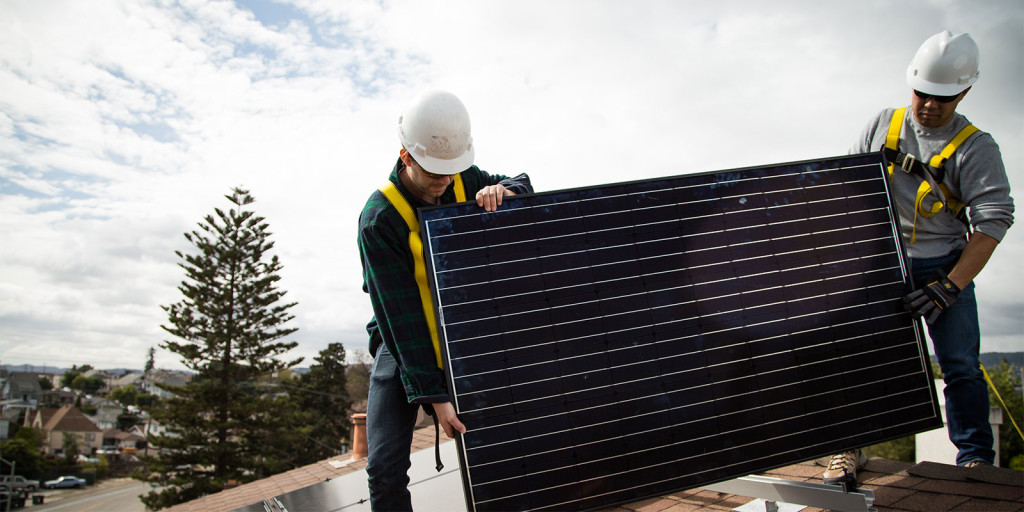Last week, the Australian Energy Market Operator (AEMO) published its 2020 Electricity Statement of Opportunities, which included that the South Australian Government has given AEMO the right to switch off the state’s rooftop PV fleet when the mass of rooftop generation threatens to reduce operational demand to a point where it impacts grid stability. The rule changes and attendant amendments to standards required of inverters now on order or installed spell uncertainty for householders, and foists potential liabilities and costs on the rooftop solar industry.
It didn’t have to be this way, John Grimes, CEO of industry body the Smart Energy Council told pv magazine this morning.
In response to a report by AEMO that South Australia was at risk of blackout if it didn’t gain control of its rooftop resource, Premier Steven Marshall has accelerated short-term measures to avoid such events.
These include the power to switch off rooftop PV in the state, which would result in households reverting to grid-supplied energy and thereby increase demand to levels which ensure stability.
More than a third of South Australian dwellings have PV installed, which the Australian Clean Energy Regulator calculated at a total of 1.27 GW of capacity in March this year, and rising!
On Thursday, AEMO published its latest ESOO, which forecasts reliability of supply in the National Electricity Market (NEM) over a 10-year period. It found that South Australia could reach record low-minimums of 250-350 MW of demand by spring, which officially starts tomorrow; and zero minimum demand by 2023.
Grimes says the mitigation route chosen by the South Australian Premier and his Minister for Energy and Mining, Dan Van Horst Pellekan, demonstrated “a traditional hierarchical command-and-control approach” which is unsuited to the diverse participants now involved in energy generation, including consumers and thousands of small businesses.
What’s more, Grimes says, the SEC had been in discussions with Van Horst Pellekan on implementation of a different, potentially faster, less disruptive solution, and had been “dumbstruck” by Thursday’s outcome.

Australian Solar Council
An alternative plan applying existing capabilities
Examples of the SEC’s proposed approach says Grimes, were to leverage the fact that every solar system in South Australia with greater than 30 kW capacity is already fitted with a remote-control switch that is currently unutilised; and to work with co-ordinators of distributed energy resources to control groups of household solar.
Among the SEC’s membership, he told pv magazine, are numerous “groups, companies and individuals who already provide that management functionality”, so that they and their customers “can optimise their feed-in-tariffs, switching between self-consumption and export”.
By contracting with existing service providers in the growing coordinated distributed-energy resource (DER) space, he says, the Government could have achieved greater “control and functionality than you’re going to get from these new requirements”.
Grimes agrees that, “A more sophisticated, intelligent, dynamic energy system is the path forward…” but says the technology is already in place to enable control of substantial proportions of the installed capacity. “It’s just a matter of the government negotiating a license agreement, and it wouldn’t be that expensive because the functionality is already set up”.
“We begged the government to, “Just take a breath, get the experts in a room and we can figure this out, but nup,” says Grimes.
Instead, the government will appoint “agents” to manage the powering down of solar in emergency situations, potentially also switching off significant loads such as air-conditioning and pool pumps via smart meters that provide oversight of residential energy use and generation.
Wait, what are we signing up for?
Grimes points out that there are as yet no guidelines for the selection of agents. “What does an agent look like? How much are they going to charge? How much is that going to cost on a monthly or annual basis? Under what requirements are they going to turn your system off?”
For solar retailers and installers, the imperative is to explain the new regulations to customers. They’re in the position, says Grimes of having to say, “Here’s the price of your solar system, and by the way there’s this requirement the South Australian government has levied on you as a purchaser, but I don’t know who’s going to provide the service, I don’t know how much it’s going to cost you, and I don’t know how often they’re going to reach in and activate these things.”
AEMO’s assurance in its report is that it anticipates “PV shedding would only be enabled under rare circumstances, as a last resort to maintain system security under abnormal conditions.”
Consumers may, however, be concerned at the peremptory imposition of the measures. As Stephanie Gray, a campaigner at Solar Citizens, said in June, when switching off swathes of rooftop solar was first mooted as an emergency mechanism for stabilising the grid, “Households across the country have made the solar switch to slash their electricity bills and do their bit for the environment. They should not be unfairly penalised for making an investment that provides cheap electricity to the grid.”
Grimes says consultation was severely lacking with just 10 working days given to respond to some seven consultation papers released by the South Australian Government on the implementation of measures to guard against blackouts this season.
Thinking through the details
Instant changes to the rules governing technical capabilities of inverters threaten to leave many solar retailers with unsellable stocks of inverters that no longer meet the state’s requirements, and that may have already been ordered by customers and sold in good faith.
Inverter models must show laboratory tests that prove their compliance with the new standards, and although that onus is on manufacturers, Grimes points out that “Under Australian consumer law, the obligation is not with the manufacturer, it’s with the importer or retailer.”
Not only could retailers have warehouses of suddenly non-compliant stock, but they could be liable to make good on installed equipment if manufacturers leave the Australian market or cease trading for whatever reason and are subsequently found to have sold non-compliant goods.
“That could be millions of dollars of liability and there’s no way in the world,” says Grimes, that retailers “can take that kind of risk.
“We said to the energy minister, ‘The details matter …’”
Upgrading transmission and distribution
High rooftop generation would cause much less concern if transmission interconnection between the states had sufficient capacity to distribute the bounty, but South Australia has already been islanded and blacked out three times this year by unforeseeable events, once for 18 days, with devastating outcomes for businesses and individuals.
The heralded transmission saviour, the 800 MW capacity Project EnergyConnect continues to slog its way through an outdated pathway to implementation and will not be completed before 2023.
With transmission improvements still a long-term solution, the South Australian Government also announced last week the allocation of $10 million to SA Power Networks, the state’s sole electricity distributor, to improve its voltage management.
This morning, SA Power Networks announced it would begin work on upgrading voltage control at 140 major substations, which support around 790,000 of South Australia’s 900,000 electricity customers.
Paul Roberts, SA Power Networks’ Manager of Corporate Affairs, said in a statement, that the distributor “is investing in the rapid deployment of new voltage control measures,” so that “during those periods of high solar export in the middle of the day, we can keep the volts down to ensure customers can continue to export their excess power to the grid.”
The upgrades should be completed by early 2021, SA Power Networks says.
A nationwide call to action
South Australia has been described as the “canary in the coal mine” by the Grattan Institute’s Energy Program Director Tony Wood, for having to face the difficulties that must soon be managed by every state, both in the NEM and in Western Australia’s South West Interconnected System.
AEMO’s ESOO says similar action will be “required urgently in Victoria, and promptly in Queensland”, and Western Power in WA is trialling community battery storage as another response to soaking up solar energy when generation is high and demand on grid-supplied energy plummets to levels that threaten grid reliability.
South Australia is taking what are widely held to be appropriate measures to deal with imminent potential problems, but Grimes says there were other options that could have been implemented in good time without negatively impacting the many diverse stakeholders who are making possible Australia’s transition to a sustainable energy future.
This content is protected by copyright and may not be reused. If you want to cooperate with us and would like to reuse some of our content, please contact: editors@pv-magazine.com.









By submitting this form you agree to pv magazine using your data for the purposes of publishing your comment.
Your personal data will only be disclosed or otherwise transmitted to third parties for the purposes of spam filtering or if this is necessary for technical maintenance of the website. Any other transfer to third parties will not take place unless this is justified on the basis of applicable data protection regulations or if pv magazine is legally obliged to do so.
You may revoke this consent at any time with effect for the future, in which case your personal data will be deleted immediately. Otherwise, your data will be deleted if pv magazine has processed your request or the purpose of data storage is fulfilled.
Further information on data privacy can be found in our Data Protection Policy.